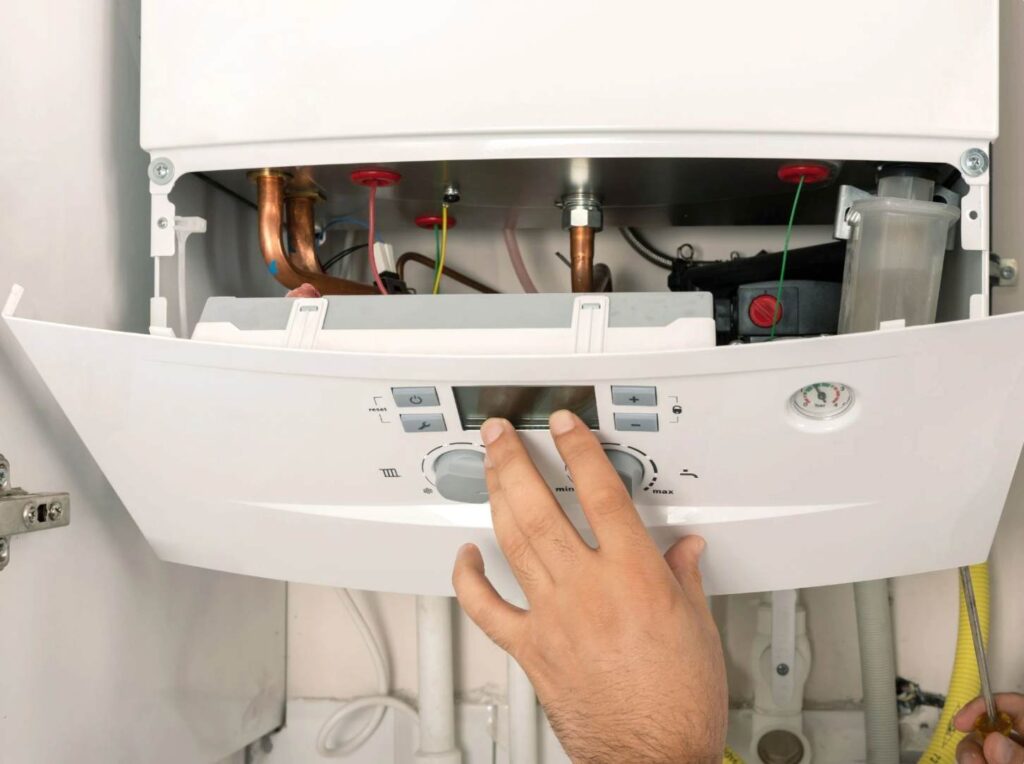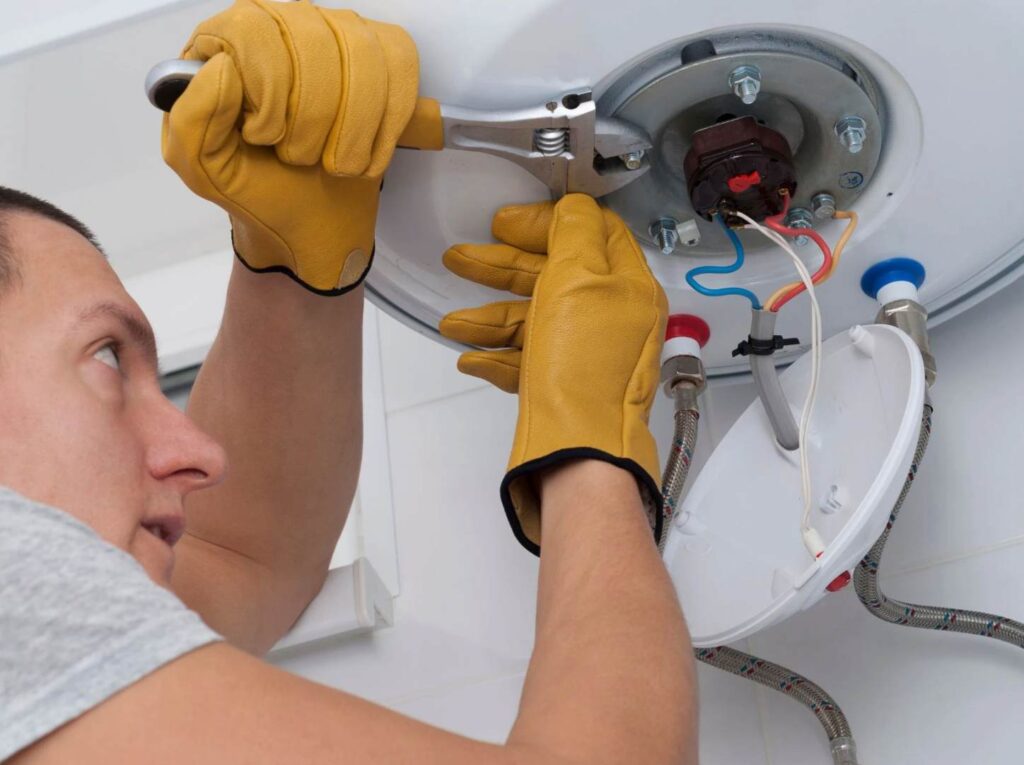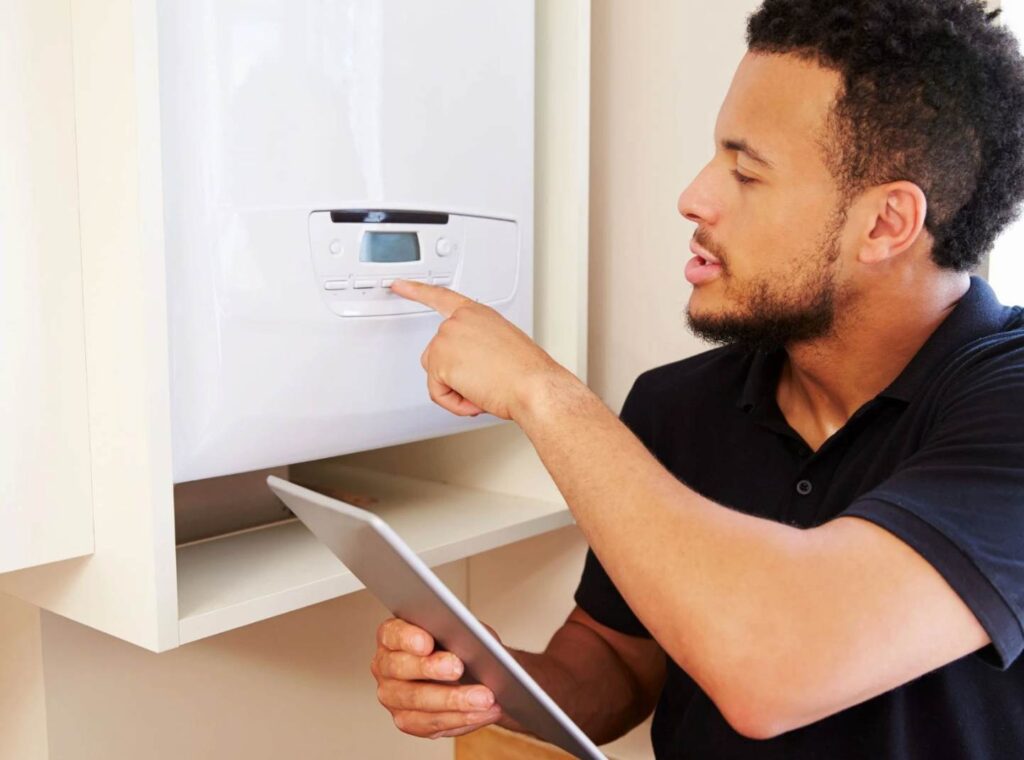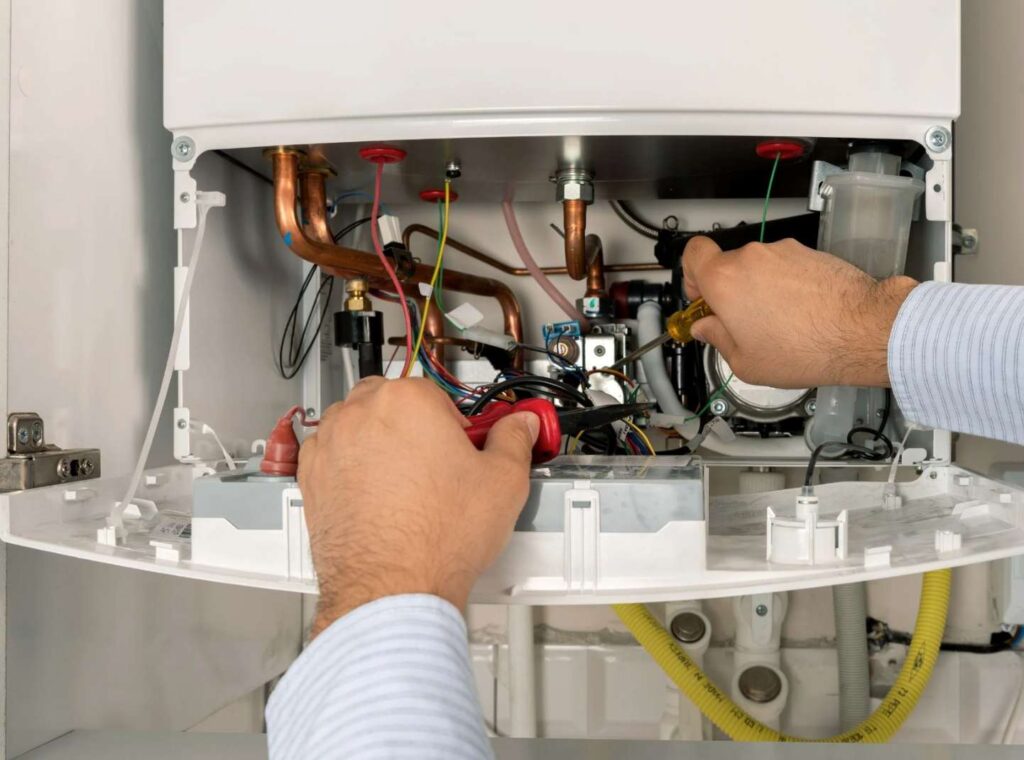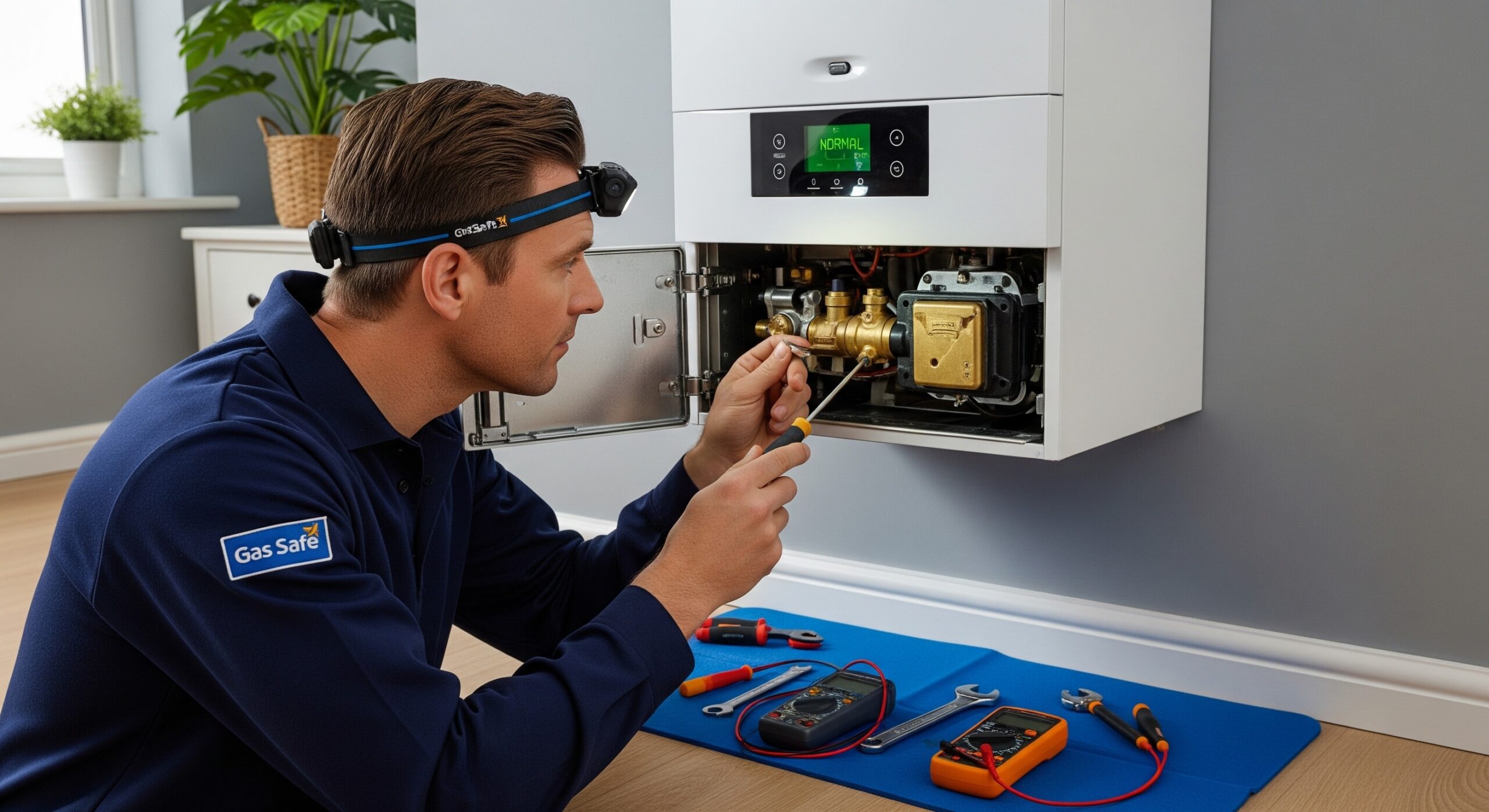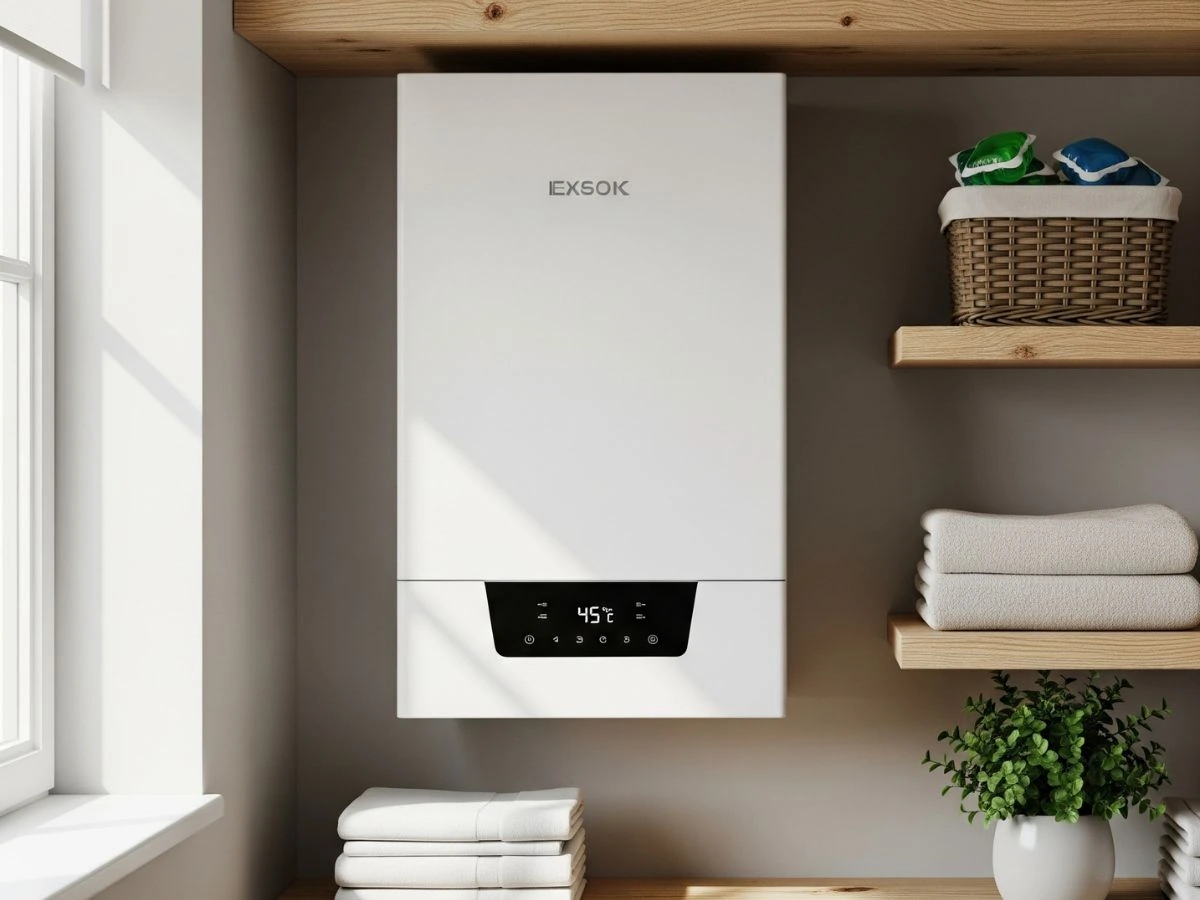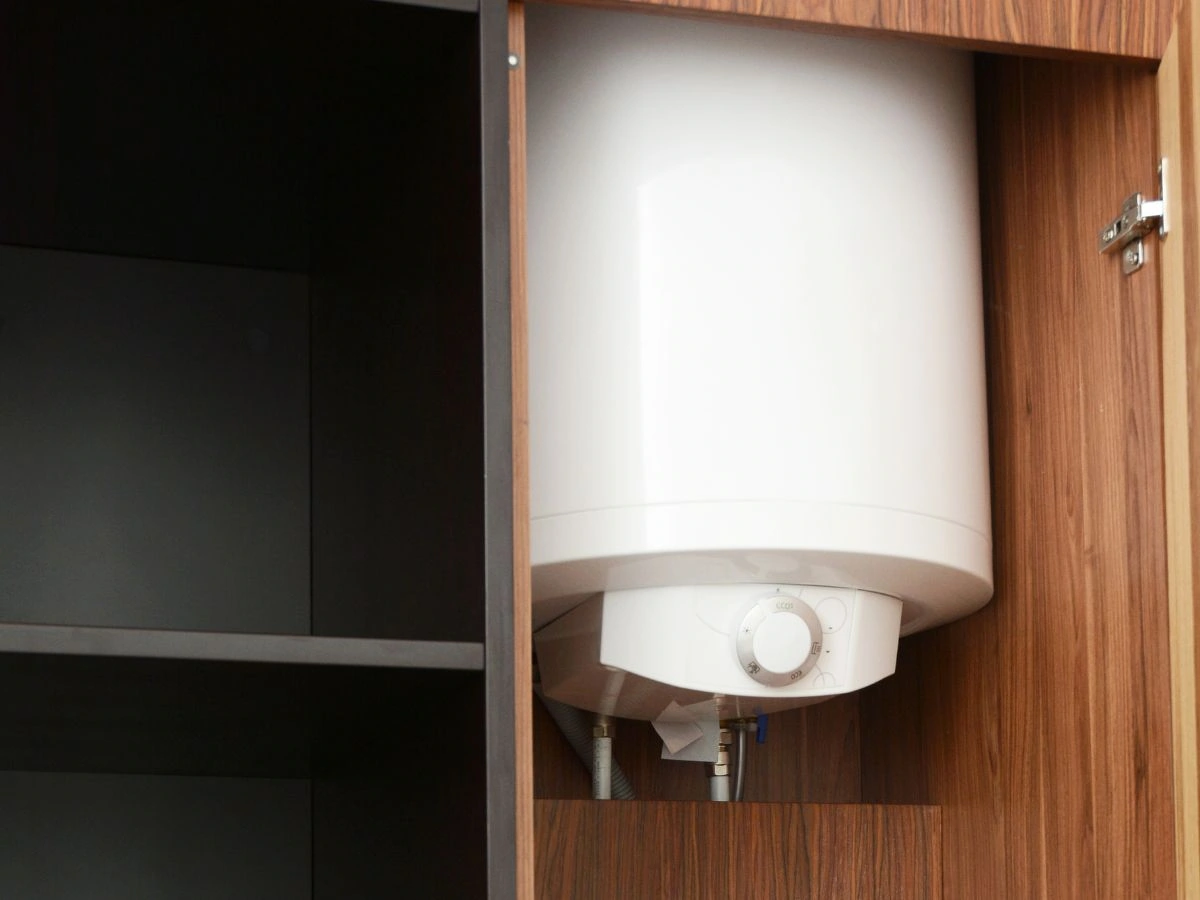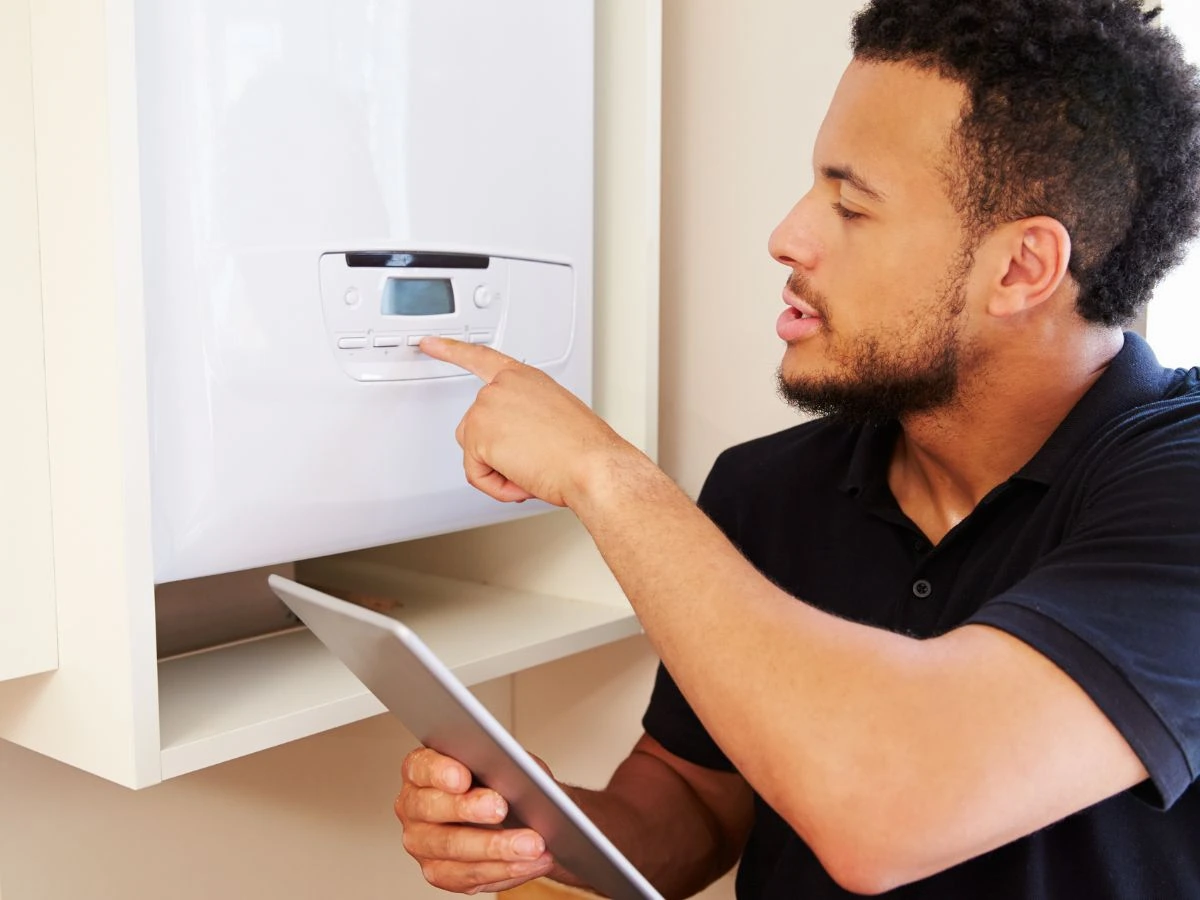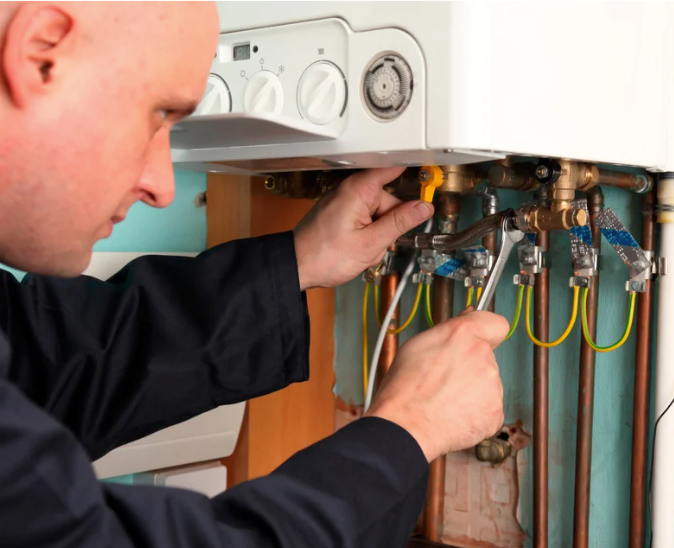These compact units provide both central heating and hot water on demand, without needing a separate hot water cylinder or cold water tank. While combi boilers are generally reliable, they can develop faults that leave you without heating or hot water when you need them most.
This guide will help you identify and fix the most common combination boiler problems safely. Many issues can be resolved with simple steps that don’t require calling a heating engineer. However, we’ll also explain when professional help is essential for your safety and to avoid making problems worse.
Understanding Your Combination Boiler
Your combi boiler works by heating water directly from the mains supply whenever you turn on a hot tap or your heating system calls for heat. Unlike regular boilers, there’s no hot water cylinder storing heated water, which makes combi boilers space-efficient and responsive.
The key components include the heat exchanger, which transfers heat from the gas flame to the water, the pump that circulates water around your heating system, and various sensors that monitor pressure, temperature, and flow rates. Understanding these basics helps you grasp why certain problems occur and how simple fixes can resolve them.
Most Common Combination Boiler Problems
The five most frequent issues affecting combi boilers are low water pressure, no hot water production, strange noises like kettling or banging, the boiler not turning on at all, and uneven heating throughout the home. These problems account for roughly 80% of all boiler faults reported by homeowners.
Before diving into specific solutions, check these basics first. Ensure your boiler has power by checking the display is lit. Verify your gas supply hasn’t been interrupted. Look at your thermostat settings to confirm they’re calling for heat. Check that your timer or programmer is set correctly for the current day and time.
If these initial checks don’t reveal the problem, work through the specific troubleshooting steps below for your particular issue.
1. Low Water Pressure Issues
Identifying Low Pressure Problems
Low water pressure is the most common combination boiler problem. Your boiler’s pressure gauge should typically read between 1 and 2 bar when the system is cold. Most gauges have green and red zones to make this easy to identify.
Symptoms of low pressure include no heating or hot water, the boiler cutting out frequently, or radiators taking much longer than usual to warm up. Some boilers display error codes when pressure drops too low, typically showing codes like F22, F75, or similar depending on your boiler make.
Fixing Low Boiler Pressure Step-by-Step
Most combi boilers have a filling loop, which is usually a flexible silver braided hose with valves at each end, located beneath the boiler. Some newer boilers have internal filling systems operated by a single lever or button.
To repressurise your system, first ensure the boiler is switched off and cool. Slowly open both valves on the filling loop while watching the pressure gauge. You’ll hear water entering the system. When the needle reaches 1.5 bar, close both valves firmly to prevent overpressurisation.
Turn your boiler back on and check it operates normally. The pressure may rise slightly as the system heats up, which is normal. If pressure drops again within a few days, you likely have a leak that requires professional diagnosis and repair. For detailed steps, see our essential boiler service checklist
2. No Hot Water from Your Combi Boiler
Diagnosing Hot Water Problems
When your combi boiler produces heating but no hot water, the issue often lies with the diverter valve, which switches the boiler between heating and hot water modes. This component can stick or fail, preventing hot water production even when the boiler appears to work normally for heating.
Check if your hot water temperature is set correctly. Many boilers have separate controls for heating and hot water temperatures. The hot water setting might have been accidentally turned down or reset during a power cut.
Simple Solutions for Hot Water Issues
Start by checking your hot water temperature setting on the boiler controls. This should typically be set between 50-60°C for optimal performance and safety. If it’s set too low, gradually increase it and test the hot water after a few minutes.
Try running hot taps at full flow to see if this triggers hot water production. Sometimes partially opening taps doesn’t provide enough flow to activate the boiler’s hot water mode. Check multiple hot taps around your home to rule out localised tap problems.
If these steps don’t work, try resetting your boiler using the reset button, usually marked with a flame symbol. Hold it for a few seconds until the display resets, then wait for the boiler to restart completely before testing hot water again. You can also read 5 reasons not to skip annual boiler service for preventative tips.
3. Strange Noises and What They Mean
Boiler Kettling Sounds
Kettling produces a sound similar to a kettle boiling and indicates that water is actually boiling within your boiler’s heat exchanger. This happens when water flow through the heat exchanger is restricted, causing localised overheating and steam bubbles.
The most common cause of kettling is limescale buildup in areas with hard water. Scale acts like insulation, preventing efficient heat transfer and causing hot spots where water reaches boiling point. Central heating sludge can also restrict water flow and cause similar issues. Learn more in our combi boiler troubleshooting guide
Banging and Gurgling Noises
Banging noises often indicate air trapped in your heating system or loose components vibrating during operation. Air can enter through small leaks, during maintenance work, or when pressure drops significantly and is then restored.
Gurgling sounds typically suggest water flow problems, possibly due to a failing pump, blockages in the system, or incorrect system design. These noises are often more noticeable when the heating first turns on or during the pump overrun period after heating switches off.
Try bleeding your radiators to remove trapped air, starting with the highest radiators in your home and working downwards. If noises persist after bleeding, the problem likely requires professional diagnosis to identify failing components or system design issues.
4. Boiler Not Turning On
Power and Display Checks
When your boiler won’t turn on, start by checking the power supply. Look for a switched fused spur near the boiler, usually labelled “boiler” or “central heating.” Ensure this switch is in the on position and check if the fuse has blown.
Examine your boiler’s display panel. A completely blank display suggests a power problem, while error codes or flashing lights indicate the boiler has power but has detected a fault. Note any error codes displayed, as these help identify specific problems.
Reset Procedures
Most boilers have a reset button that can clear temporary faults and restart the system. This button is usually red or black and marked with a flame symbol or the word “reset.” Press and hold for about five seconds, then release and wait for the boiler to complete its startup sequence.
5. Radiator Problems with Combi Boilers
Cold Radiators
Cold radiators while the boiler is running often indicate air trapped in the heating system. Air prevents hot water from circulating properly and creates cold spots, usually at the top of radiators where air naturally collects.
To bleed radiators safely, you’ll need a radiator key and a cloth to catch any water. Start with the radiator furthest from your boiler and work systematically through your home. Turn the heating off and wait for radiators to cool before bleeding.
Open the bleed valve slowly using the radiator key until you hear air hissing out. Keep the valve open until water starts flowing steadily, then close it firmly. Check your boiler pressure after bleeding multiple radiators, as this process releases water from the system.
Uneven Heating
When some radiators heat well while others remain lukewarm, your heating system needs balancing. This involves adjusting the flow through each radiator so that heat distributes evenly throughout your home.
Start by identifying which radiators heat up first when the heating turns on. These are receiving too much flow and need their lockshield valves partially closing to reduce flow. The lockshield valve is usually covered by a plastic cap and requires an adjustable spanner to turn.
Make small adjustments to lockshield valves, turning them clockwise to reduce flow. Test the system after each adjustment by turning the heating off and on again. Professional heating engineers use specialist thermometers to balance systems precisely, but homeowners can achieve reasonable results with patience and careful observation.
When to Call a Gas Safe Engineer
Some boiler problems require immediate professional attention for safety reasons. Call a Gas Safe registered engineer immediately if you smell gas anywhere near your boiler, see signs of carbon monoxide like black staining around the boiler, or notice the pilot light burning with a yellow flame instead of blue.
Technical problems beyond DIY solutions include internal component failures like faulty heat exchangers, gas valve problems, electrical control board faults, and issues with flue systems. These require specialist tools and knowledge to diagnose and repair safely. For more information, see our guide to Gas Safe registered professionals
Preventing Future Boiler Problems
Regular maintenance significantly reduces the likelihood of boiler breakdowns and extends your system’s lifespan. Simple tasks homeowners can perform include checking boiler pressure monthly, bleeding radiators annually, and keeping the area around your boiler clear of obstructions.
Annual boiler servicing by a Gas Safe engineer is essential for maintaining efficiency, safety, and warranty compliance. During a service, engineers clean internal components, check gas pressures, test safety devices, and identify potential problems before they cause breakdowns. This is one of the key reasons why regular boiler servicing is essential.
Conclusion
Most combination boiler problems can be resolved with simple troubleshooting that doesn’t require specialist knowledge. Following this systematic approach often restores heating and hot water quickly and safely.
Safety comes first with gas appliances. Never attempt gas component repairs yourself, and call professionals when problems persist or you’re unsure. Regular maintenance keeps your boiler running efficiently.
If our troubleshooting guide couldn’t solve the problem, it’s time to call in the experts. The team at Premier Gas specialises in diagnosing and repairing complex combi boiler faults across Newcastle. With over 20 years of experience, you can trust us to get your heating and hot water back on quickly and safely. Request your free repair quote today and let our Gas Safe engineers handle the rest.


